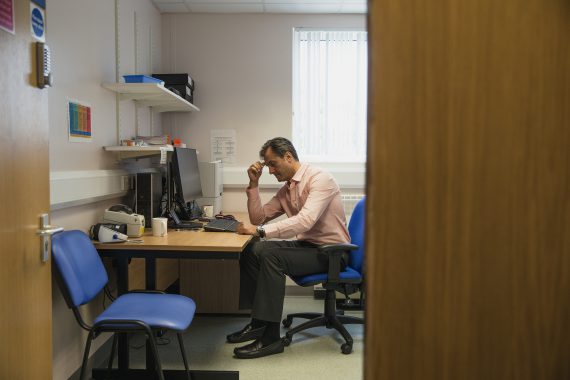Attempts to improve the attractiveness of general practice in Scotland have yet to yield results, as the workforce declined by over 4% in the last five years.
Official workforce survey data published by NHS Scotland showed that full-time equivalent (FTE) GP numbers has fallen by 160, from 3,735 in 2013 to 3,575 in 2017.
At the same time, the number of practices reporting a GP vacancy grew to nearly a quarter (24%), having stood at 22% in 2015 and 9% in 2013.
This comes as over a third (36%) of GPs in Scotland were aged 50 years or over.
The workforce survey also revealed that all NHS Boards had to take actions due to being unable to fill GP out-of-hours shifts as planned.
The most common actions taken to fill shifts were for staff to work longer shifts and increased rates/financial incentives, the report said.
In all, 10% of out-of-hours GPs worked 1,000 hours or more over the year and their total annual hours accounted for nearly half (46%) of the total GP hours worked.
RCGP Scotland said the latest data came ‘at a time when the demand for general practice continues to rise and the population of Scotland continues to grow, with people living for longer, with multiple medical conditions’.
It warned it had led to ‘over-stretched’ services and already ‘having knock-on effects on patient care’.
RCGP Scotland chair Dr Carey Lunan said: ‘Practices are struggling to fill long-standing GP vacancies, which not only causes instability within practices but also has a knock-on effect on patient care, with many patients facing lengthy delays in seeing a GP.’
He added: ‘It is essential that the Scottish Government continues to address the rising demand for GP services and plans accordingly.’
The BMA said it hoped upcoming changes to GP practice terms and conditions will help to improve the workforce situation.
It has negotiated a new GP contract for Scotland, which has been accepted in a vote of the profession.
The Scottish Government has announced plans to invest £100m this year to implement the contract.
A three-year transition onto the new contract will start this April, with a new funding formula underpinned by additional investment and a guarantee no GP will earn under £80,430.
BMA GP Committee chair Dr Alan McDevitt said that the data showed that ‘recruitment and retention problems continue to be an issue across Scotland’.
‘Our own surveys have shown similar results over the past two years, and one of the main objectives of the GP contract negotiation was to address these problems,’ he said.
He added that he hoped the new contract would ‘start to address the significant workload pressures that are currently being felt by GPs and their practice staff’ by offering ‘stability and security of funding for practices’ and helping to ‘[reduce] the business risk of being a GP’.
‘I hope that young doctors will be encouraged by the direction we are going in to choose a career in general practice,’ he said.
The news comes as the GP workforce in England has continued to decline, with 219 full-time equivalent GPs lost to the profession between September and December 2017.
Scottish GP workforce data 2013-2017
- Overall GP headcount has ‘changed very little over time’, but FTE GPs has been declining since 2013 – from 3,735 in 2013 to 3,575 in 2017; a decrease of over 4%.
- The FTE workforce of registered nurses and healthcare support workers employed by general practice increased by 9% and 33% respectively in the five-year period.
- Nearly a quarter (24%) of GP practices reported current GP vacancies, compared with 22% in 2015 and 9% in 2013.
- Some 6% of responding practices reported vacancies for registered nurses.
- Over a third (36%) of GPs and more than half (55%) of nurses working in Scottish general practice are aged 50 years or over.
- Within GP out-of-hours services, 10% of the GPs worked 1,000 hours or more over the year and their total annual hours accounted for nearly half (46%) of the total GP hours worked.
- All NHS Boards reported having to take actions due to being unable to fill GP out-of-hours shifts as planned. The most common actions taken to fill shifts were for staff to work longer shifts and increased rates/financial incentives.
Source: Information Services Division of NHS Scotland
Pulse October survey
Take our July 2025 survey to potentially win £1.000 worth of tokens













